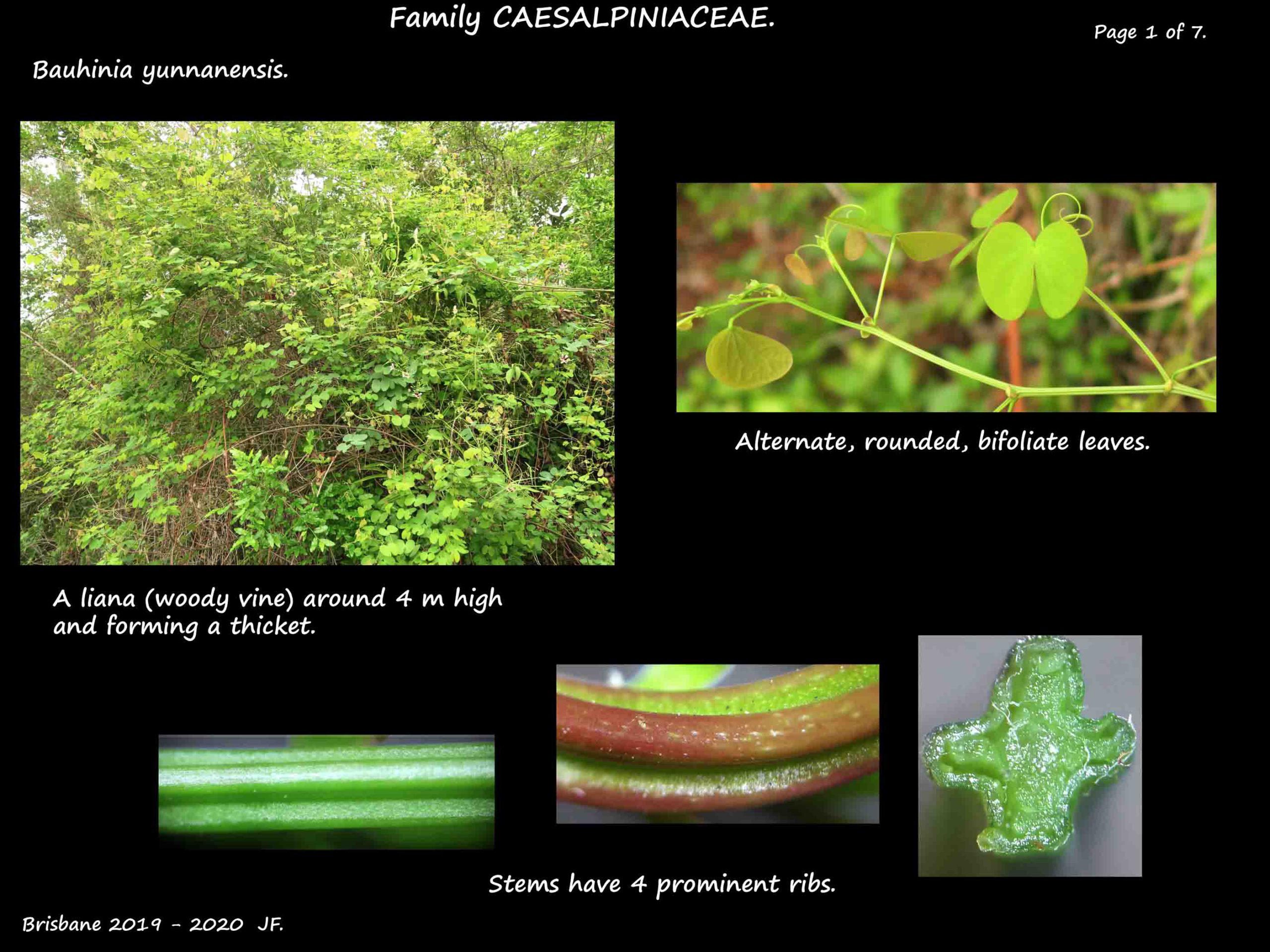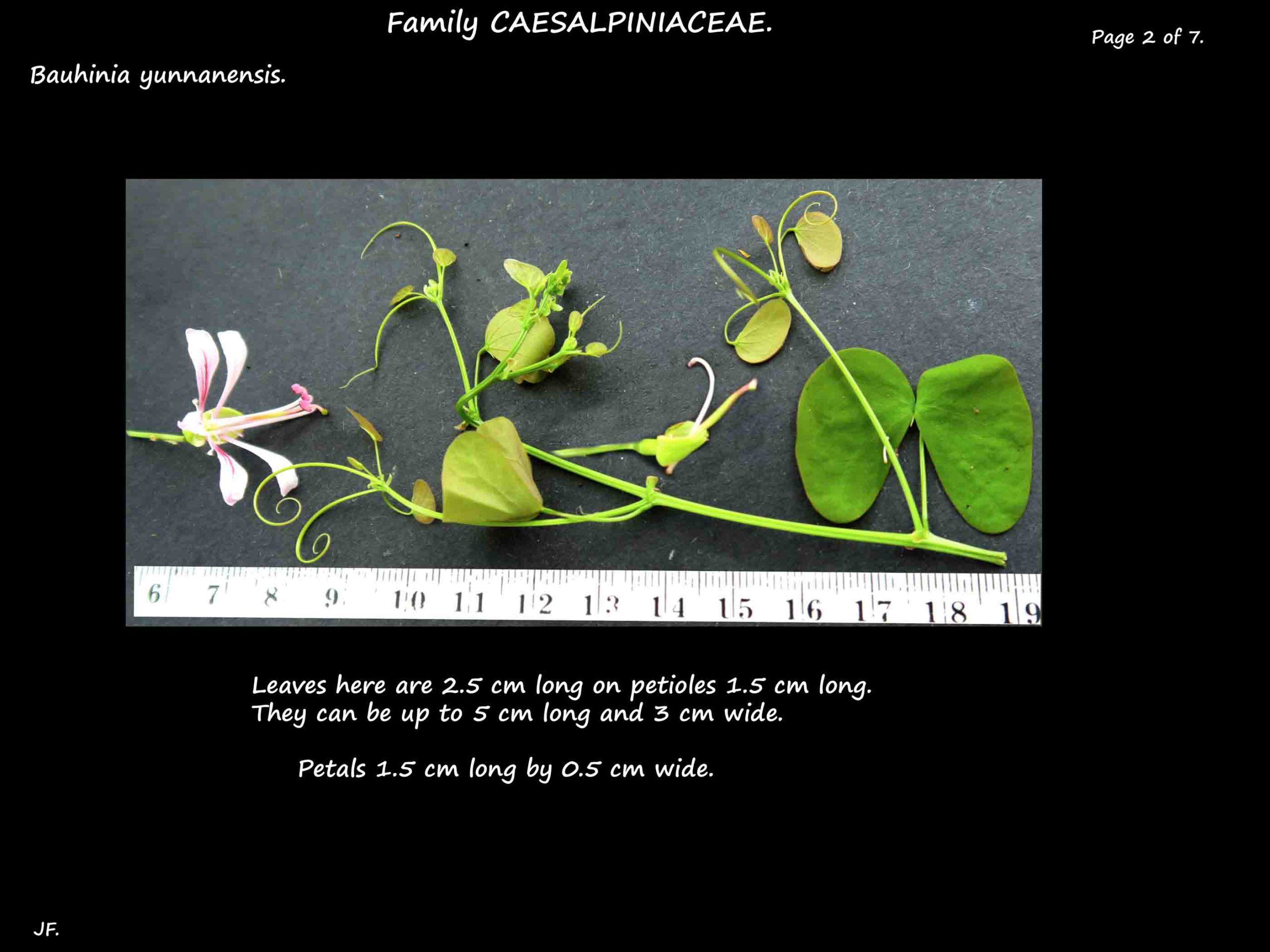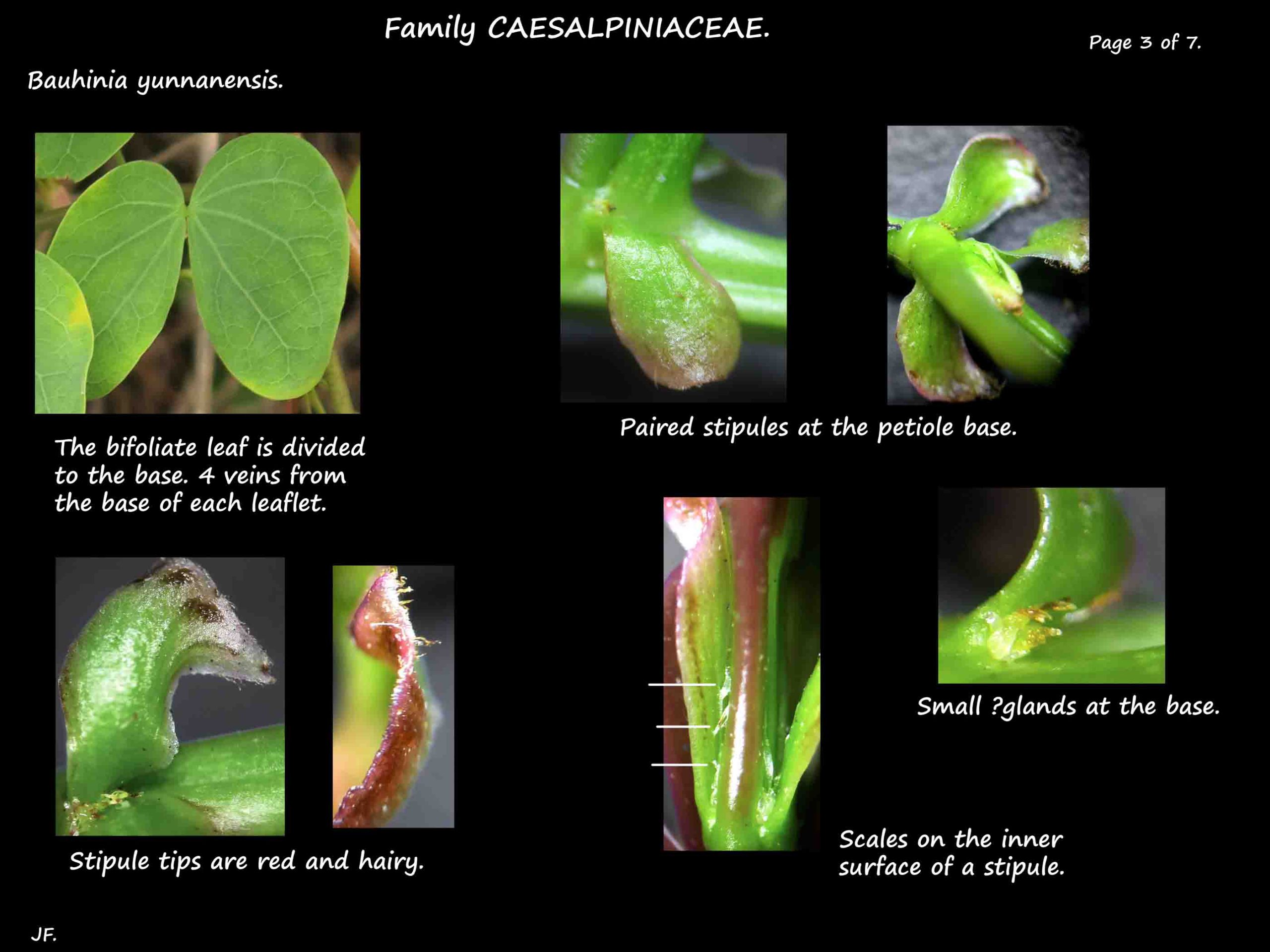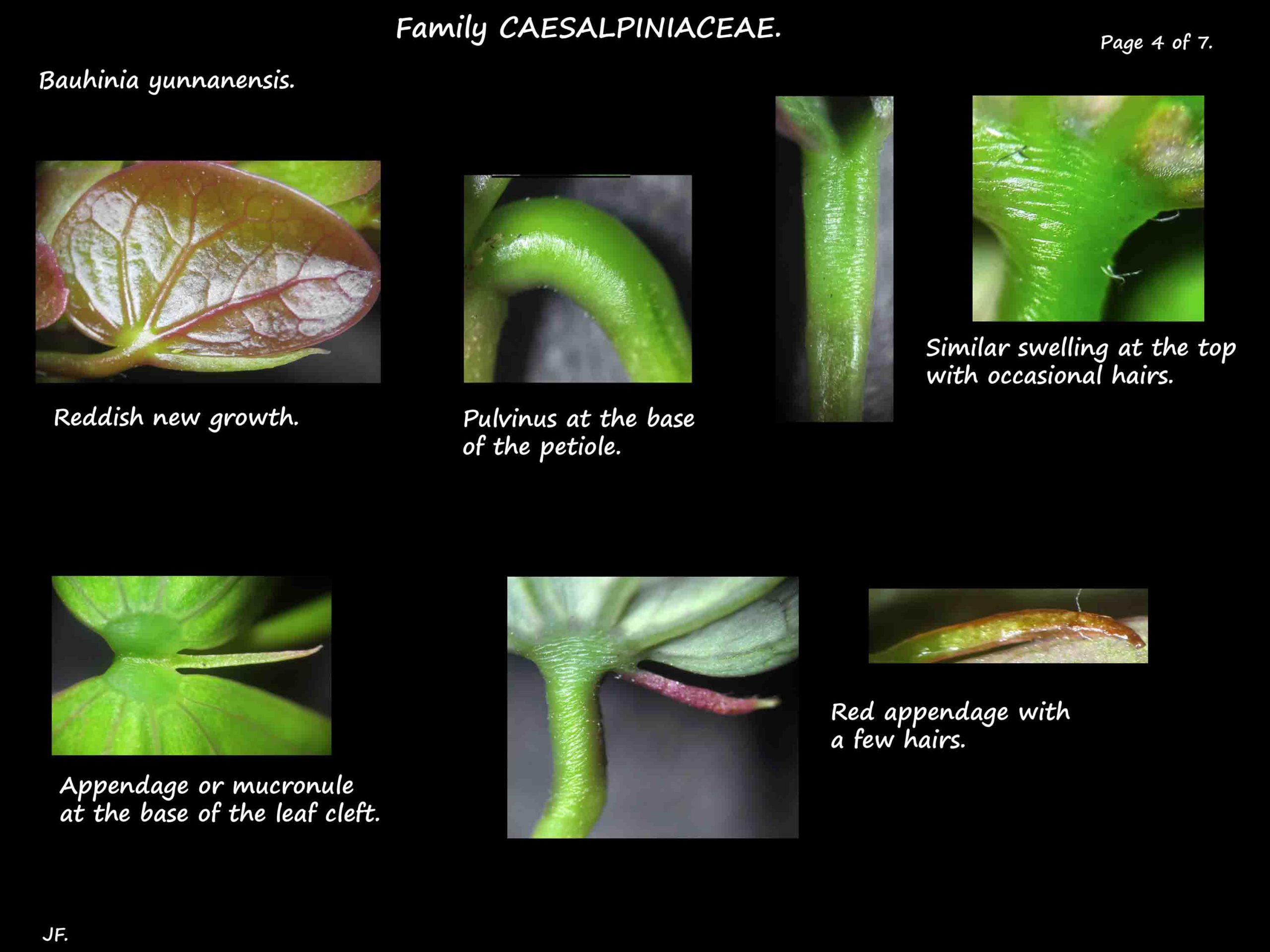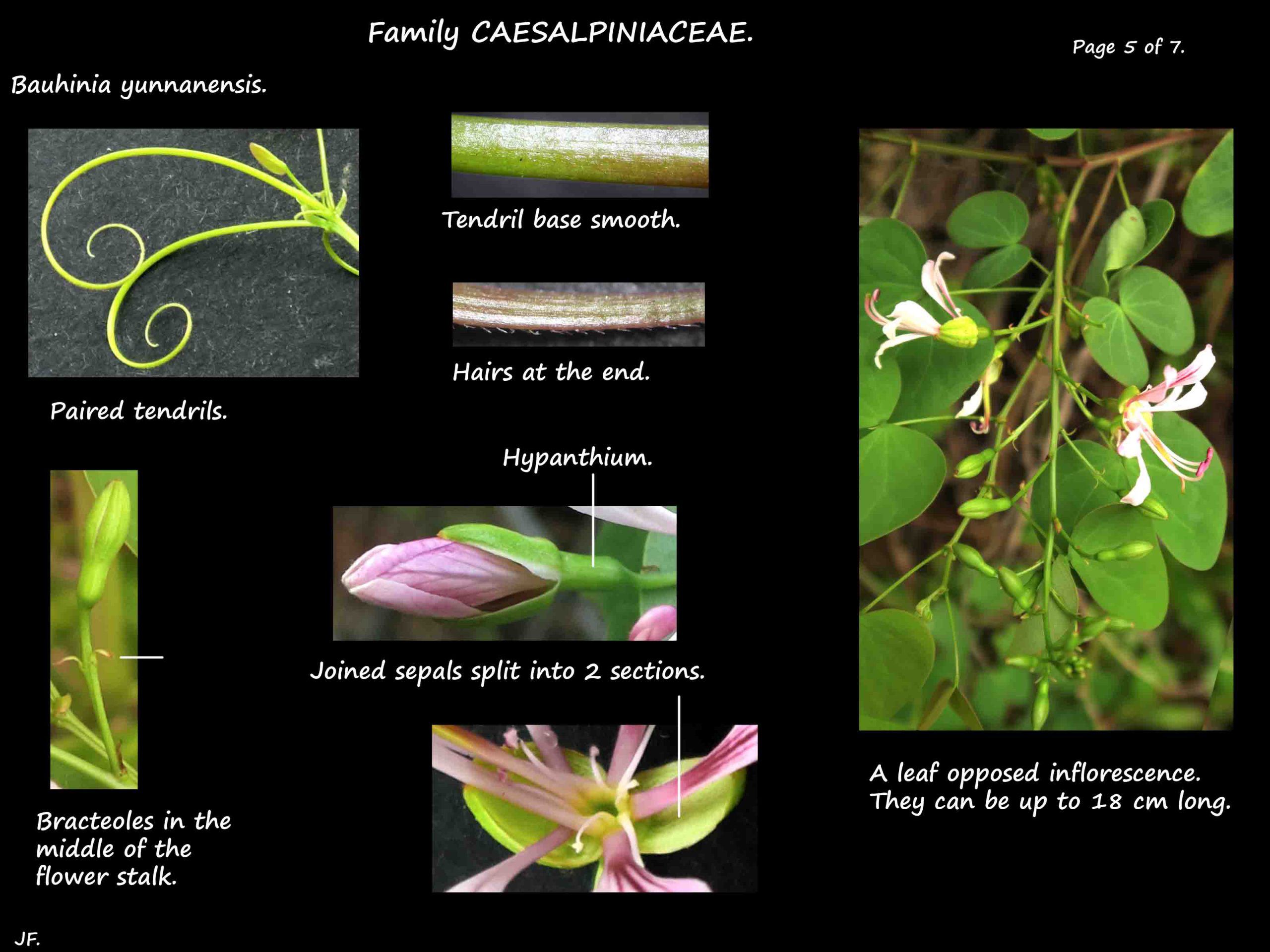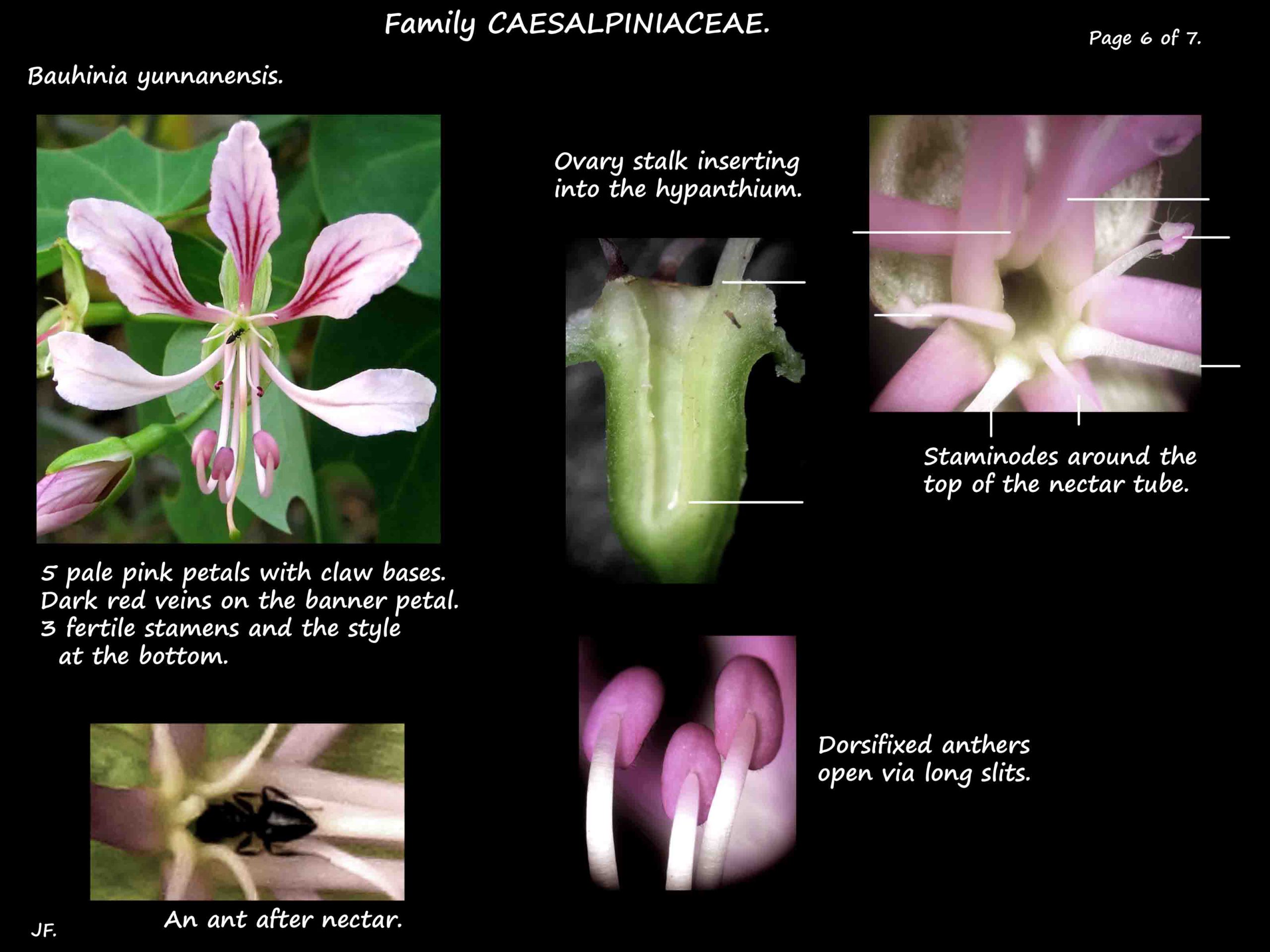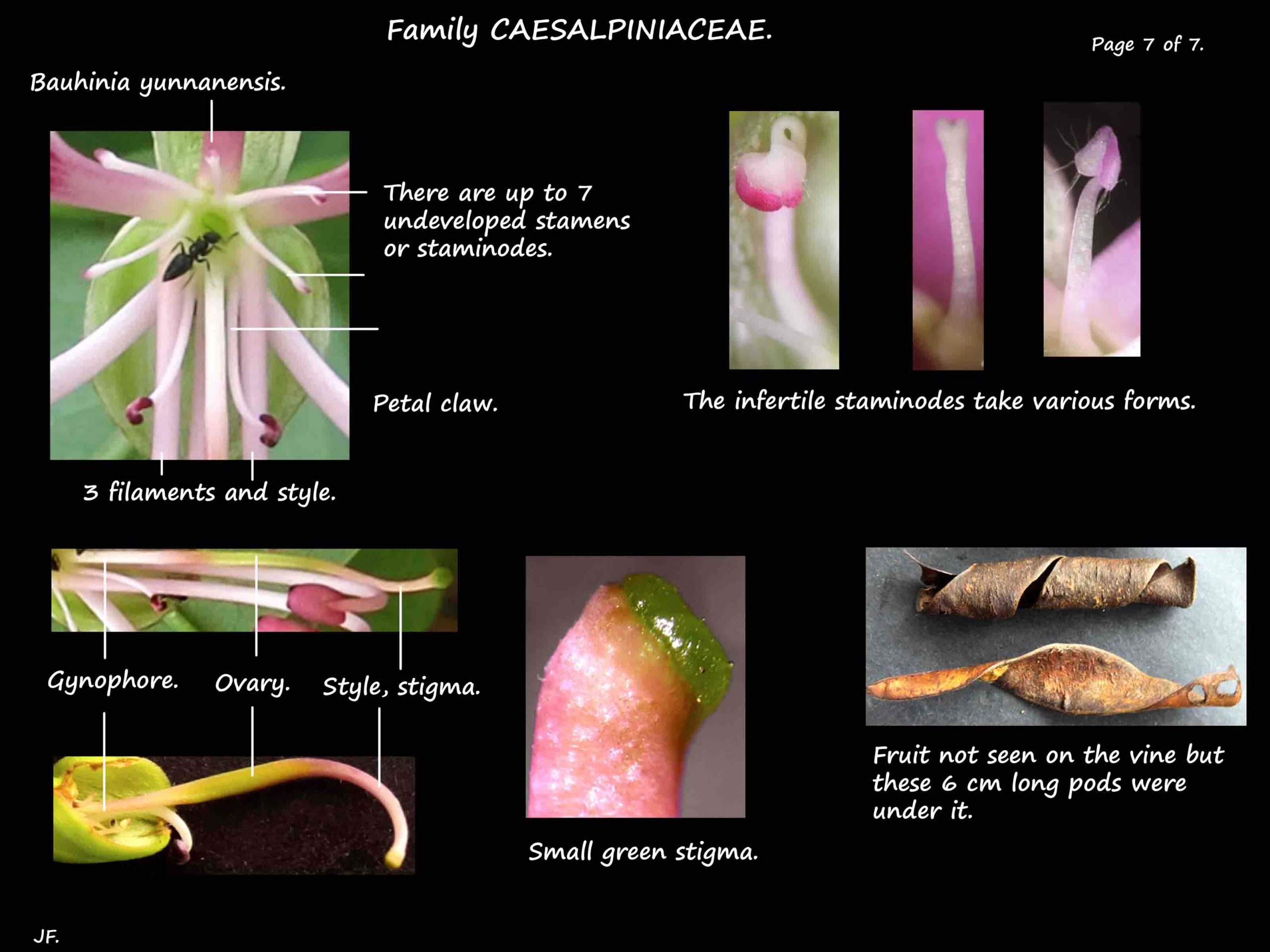Bauhinia yunnanensis.
The Yunnan Bauhinia is also seen as Phanera yunnanensis.
Native to China it is occasionally seen in Brisbane.
It has often been sold as B. corymbosa which is also a vine.
B. corymbosa has bilobed leaves, brown hairs on many parts and different petal markings.
B. yunnanensis are woody vines (lianas) usually with stems around 4 m long but they can be 10 m.
They can form thickets from fallen seeds or by low branches layering.
Young green stems, with few or no hairs, can be cylindric or angled.
They climb using paired, curved, hairless tendrils growing from the leaf axils.
The alternate, light green leaves are on petioles 1.5 to 2.5 cm long.
There is a pulvinus at the base and a similar swelling at the top of the petiole.
There are green, leaf-like stipules with red, hairy tips.
The stipules are deciduous.
The roughly circular leaves are bifoliate with leaflets 2 to 5 cm long and 1 to 3 cm wide.
There is an appendage described as a mucro, mucronule or extension of the petiole.
Both ends of the leaflets are rounded.
Each leaflet has 3 or 4 veins radiating from the base.
There are only occasional hairs on all parts – mostly on the stipule tips.
Inflorescences are terminal or leaf-opposed spikes with up to 20 flowers.
The spikes are up to 18 cm long with bracts at the base of the main stalks (peduncles).
The bracts do not persist.
There are bracteoles in the middle of the 2 to 3 cm long flower stalks (pedicels).
There is a short hypanthium formed by fusion of the sepal, petal and stamen bases.
It is lined by nectar producing cells.
The 5 sepals are initially joined but split into 2 sections.
The concave, ovate sections have small teeth – 2 on one and 3 on the other.
The 5 separate petals, about 17 mm long, have a narrow clawed base and ovate ends.
They are white or a very pale pink and the upper 3 have deep reddish-purple veins.
There are a few hairs.
The 3 long, fertile stamens lie together in the lower part of the flower.
The ends of the white filaments curve upwards holding the pink anthers.
There are 7 small staminodes.
The superior ovary is on a long stalk or gynohore that inserts into the hypanthium.
The pale pink style holds a small green stigma.
There are no, or only occasional, hairs on these parts.
The fruit pods are legumes that split along both sides.
They are flattened, slightly curved and up to 15 cm long.
The up to about 10 flat, blackish-brown seeds are almost 1 cm long.
J.F.
